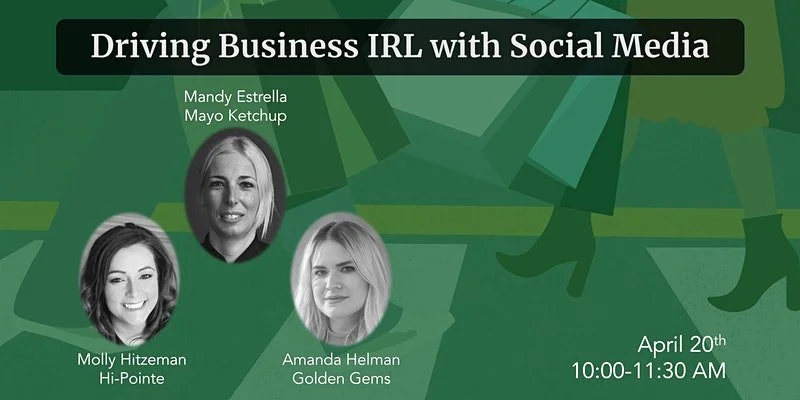Designing a great product is easy. Getting it to market? Now that’s the hard part. Whether you’re running a large enterprise or a teeny-tiny business, marketing is one of the most important hats you wear. If your small business doesn’t have a marketing department, read this guide from the Social Media Club St. Louis to learn why you need one and what it takes to start marketing your brand.
What does a marketing department do?
Marketing isn’t just a fancy buzzword for sales. Sales converts leads into clients, but it’s marketing that convinces customers to do business with you in the first place. Marketing departments accomplish this by:
Researching target markets, competitors, and trends.
Building a strong brand identity and unified brand message
Leveraging marketing channels to generate and nurture leads.
Developing strategic marketing plans to achieve business objectives.
Monitoring marketing results and returns on investment.
Why you need a marketing department
Marketing plays a vital role at every stage of business growth. It’s the face and voice of your company and the strategies you use to convert new customers and retain existing ones. Here are three key reasons your business needs a marketing department:
Establishing a brand
Branding is more than a business name and logo. Developing a brand starts with identifying your target market and developing buyer personas based on needs, pain points, behavior, and other audience data. After compiling buyer personas using market research and Google Analytics, marketers deliver relevant content and offers on the channels your audience frequents.
A brand style guide details the rules of your brand’s identity. This includes your company logo as well as its color palette, typography, iconography, tone of voice, and image guidelines. A comprehensive style guide guarantees a consistent brand identity which, in turn, fosters trust and loyalty.
Launching a new product
Bringing a new product to market is more difficult than it seems. You need to validate demand, develop a sales strategy, map the buyer journey, and generate buzz around a product before it launches. In addition to setting a go-to-market strategy, marketing departments monitor analytics to see what’s working and adjust what isn’t.
A digital whiteboard organizes the key components of your go-to-market strategy including tasks, insights, KPIs, and relevant files. For your first product launch use a whiteboard template to organize project details instead of starting from scratch. Here's an example of a go to market strategy that guides you through the process of establishing goals, markets, and outcomes for your product launch.
Increasing online presence
Customers increasingly find and engage with brands online. As a result, maintaining a brand’s digital presence is a big part of marketing department responsibilities. Major projects to boost digital presence include website development, search engine optimization, digital ad campaigns, and content marketing campaigns. On a day-to-day basis, marketing departments manage social media pages, publish content, send email campaigns, and otherwise engage audiences online.
These tasks are made efficient through a variety of marketing tools including software for customer relationship management, social media management, and email marketing automation as well as tools for analyzing website traffic and SEO performance.
How to structure a marketing department
In an ideal world, every business would have a fully-staffed marketing department complete with project managers, brand strategists, SEO specialists, graphic designers, and content creators. However, many small businesses operate with lean teams including only a manager (often the business owner), a marketing generalist, and a designer.
When operating with a small marketing department, prioritize the channels and strategies that deliver the best returns rather than spreading your focus too thin. You can add capabilities as your company grows, but you can’t grow without effective marketing.
Developing a marketing department is a huge undertaking, even (or especially) if you’re working with a tiny team. It’s also one of the most impactful things you can do for your brand’s sustainability and growth. Instead of sidelining marketing until you can afford to hire a complete marketing team, identify the steps you can take today to build a strong brand identity and start reaching your audience.






